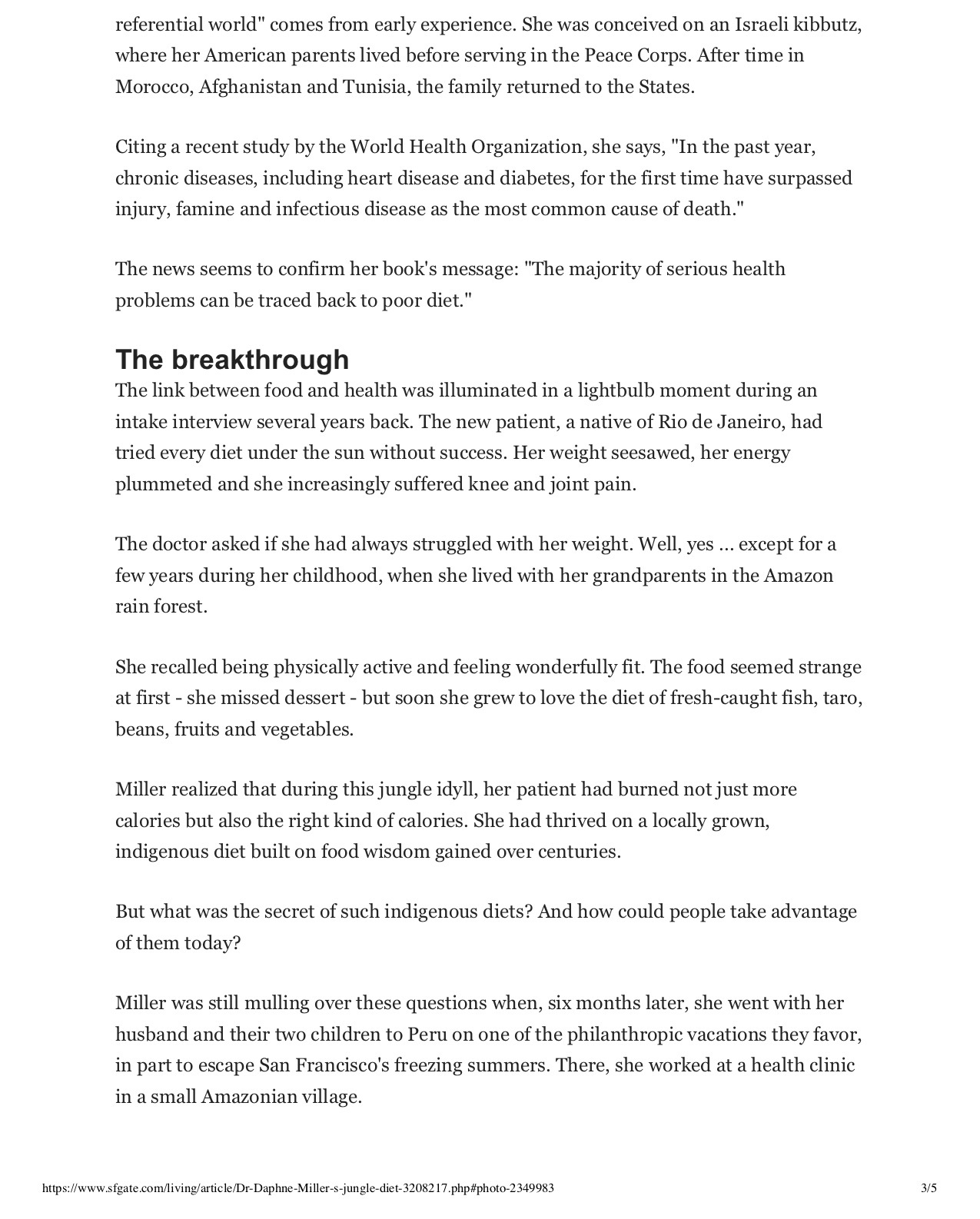The Joy of Jungle Spaghetti
In his foreword, Dr. Weil wrote, “This is a groundbreaking book, based on original research, that describes novel strategies for reversing the progression of chronic diseases and maintaining optimal health … I can’t wait to try the West African ndole stew and to make my own version of goya champuru, a stir-fry dish containing tofu and bitter melon that I enjoyed in market restaurants in Okinawa while studying healthy aging there.”
In April, Dr. Miller made a presentation to rousing applause at the Fifth Annual Nutrition and Health Conference in Phoenix, co-sponsored by the Arizona Center for Integrative Medicine (founded by Dr. Weil in 1994).
During your presentation and in your book, you told a terrific story about a patient of yours who experienced the “jungle effect” firsthand. Can you go through that again?
This is the story of Angela, who was actually born in a big city, Rio de Janeiro. When she was in grade school, her part-Italian mother and Italian grandmother would cook up rich pastries and pasta dishes. She became overweight and was teased a lot by the other kids – she was called porquinho, which means piglet. Her parents split up when she was eight years old, and she was sent to live in the rainforest with her father’s family, who were Maues Indians. While she was there, she noticed this wonderful transformation of slimming down, and having more energy.
This is the rainforest where?
Right on the Amazon River, in a little village. Then, when she was high-school age, she moved back to Rio and all the weight came back. From there, she moved to New York and eventually San Francisco. With each transition away from the rainforest, she would gain more weight. Eventually she started to have other health problems including depression, knee pain and high blood pressure. By the time she was in her late 30’s, she had seen a slew of doctors and tried thyroid medicine and a bunch of different diets.
About six months before she came to see me, her favorite uncle who lived in that little village in the rainforest passed away at age 96. She took a leave of absence from work, went back to the village and spent two months there. Interestingly, while she said that she was actually eating more than she had in San Francisco and exercising about the same amount, she felt the same transformations that she had as a child. She started losing weight, feeling more energetic and happy, and her blood pressure went down.
Then she came back to San Francisco, went back to work, and slowly all the negative effects of being in the city started to come back again. So what ultimately brought her in to see me was that she wanted to discuss this transformation she had felt in the rainforest. She wanted me to tell her what it was that made her feel so well there, what was causing this “jungle effect.”
To me at the time, the answer seemed really obvious: she must have been eating fewer calories and maybe exercising more in that village. I gave her some information on low-calorie food, told her to exercise more – you know, the things that doctors always say. Then by sheer coincidence, six months later I took a volunteer job in a medical clinic along the Amazon, about 200 miles upstream from Angela’s village. It was in a tiny, remote village, similar to Angela’s. There was not much trade with the outside world; not much prepared or packaged food. Everything we ate was local.
Can you give some specific foods?
We ate things like fresh-caught river fish, plantains, shredded hearts of palm that the locals called “jungle spaghetti,” boiled yucca and fruits. And like Angela, I had the strong sense that I was eating as much or more than I usually ate at home. For example, if you ever got hungry between meals, you just pulled a banana off of a bunch – they were growing everywhere – and that was a snack.
And you began to experience the “jungle effect”?
Yes, it was so interesting to see some of the American volunteers who were there, and even my own family feeling the same kind of effect. We were not necessarily exercising more – it was too hot to exercise! – and still we were slimming down, and feeling more energetic, while eating very satisfying meals. And I realized that so much of it had to do with the local foods and the way they were put together. These were recipes that had been prepared for hundreds and hundreds of years because they tasted great and kept people healthy.
I also noticed when I was there that I saw lots of snakebites, machete wounds, malaria and other infections and injuries – these were the kind of medical problems that were easy to treat or prevent with modern medicine and sanitation. But I did not encounter anyone other than tourists who had the diseases I saw every day in San Francisco: obesity, heart disease, diabetes and depression.
So I began to talk to people, and I began to write down recipes, because while some of what we ate was exotic and hard to find in the states, many of these foods were available in standard North American supermarkets. When I returned, I emailed a dozen of these recipes to Angela. A month later, she called me back and said she was really enjoying the food, had gotten some of her “jungle energy” back and was exercising regularly. Two months later, her weight was down 14 pounds, and she felt the diet was easy to maintain. When her friends asked for her secret, she had answered, “I put myself on the Jungle Diet.”
Read Part Two






